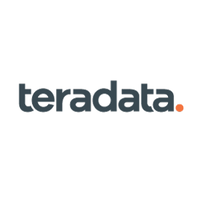Data warehouse software is essential for companies looking to streamline their data centers or implement business intelligence software. Business intelligence software stores and analyzes huge volumes of data, and your company will need data warehouse software to keep each database organized and ensure the data stays consistent. Data warehousing software stores data from a variety of sources and makes it searchable, so you can easily find the information you need for analysis. To help you find the right data warehouse for your business, use this buyer’s guide covering the top data warehouse software and tools.
Data warehouse software overview
- What is Data Warehouse Software?
- Key features of Data Warehouse Tools
- Top Data Warehouse Solutions
- Oracle Database
- Grow
- ClicData
- Snowflake
- Teradata Database
- Panoply
- Funnel
- Google BigQuery
What is Data Warehouse Software?
Data warehouse software is a program that extracts, transforms, and loads (ETL) data from a variety of different sources and puts it into the same format, so companies can easily analyze it. The software will also scrub redundancies to provide a cleaner view of the data. The main goal of organizations using data warehouse software is to support analytics and make summary data easier to access.
Also read: Legacy Systems and Data Management Issues Hinder Digital Business Transformation
Key Features of Data Warehouse Software
Some data warehousing platforms offer more features than others, but most share at least a few key features.
Data transformation
Data warehouse software pulls data from many different platforms and converts it into the same type. This allows it to be easily compared and analyzed from a single console. The system also eliminates redundancies in the information and cleans it in the event of incorrect or incomplete data.
Business intelligence integration
While business intelligence (BI) and data warehouse software are usually kept as two separate technologies, they are closely related and help organizations improve their decision making. Data warehouse software stores data in its raw form, while BI software displays the data in an easy-to-understand format and provides insights based on the information. Therefore, data warehouse software should integrate with your BI system to make retrieving and analyzing data easier.
Relational databases
Relational databases store pieces of related data and control access to them. The data is formatted into tables where organizations can easily see how the information is related. One example of data that might be stored in a relational database is customer information. When a customer places an order, the order is labeled with the customer ID and the relational database matches that ID with a billing and shipping address to quickly process the order and provide timely delivery.
Also read: Top 10 Benefits of a Data Warehouse
Top Data Warehouse Solutions
Here are some of the top data warehouse solutions based on customer reviews and the features they provide.
Oracle Database

Oracle Database offers data warehousing and analytics to help companies better analyze their data and reach deeper insights. The platform includes machine learning (ML) capabilities, allowing developers to easily integrate ML into their Python, Ruby, or SQL applications. Oracle Database features a single management dashboard that improves performance and data access. It offers encryption, privileged access controls, activity monitoring, and more to meet compliance requirements and keep data secure.
Pros
- Easy to move data
- Comprehensive documentation and support
- Tables make the database easily searchable
Cons
- Can’t be deployed on-premises with Mac devices
- Requires heavy resource usage, which slows down other programs
Grow

Grow makes it easier to pull and transform data from multiple sources and blend it to create dashboards that provide better company insights. It also includes no-code options to help citizen developers create custom calculations and summaries of relevant data. There are native integrations available for many of the most popular tools, including CRMs, social media platforms, accounting software, and marketing analytics. Grow connects data and creates helpful models, so organizations can store and analyze data within the same application.
Pros
- Can pull data from a wide variety of platforms
- Combine warehousing, ETL, and BI into one platform
- Accommodates users of varying technical expertise
Cons
- Fewer BI capabilities than pure BI platforms
- Can occasionally have long load times
ClicData

ClicData pulls information from over 150 different data sources, providing a simplified view of a company’s data. It uses a real-time API, meaning that it only pulls the most up-to-date data. The platform also keeps snapshots of historical data, allowing businesses to compare current and past trends or restore it if something goes wrong. ClicData allows users to create custom calculations and groups in order to get the most from their data. It can also be white-labeled, allowing agencies to share branded reports with their clients.
Pros
- Custom dashboards provide clear results
- Intuitive user interface
- Easy to share dashboards
Cons
- Steep learning curve
- Some users want more templates
Snowflake

Snowflake offers a cloud-based data warehouse that provides a single source for all data and is easy to scale as your business grows. It integrates easily with the major public cloud providers, like Amazon and Azure and requires very little maintenance. Snowflake provides companies greater access to their data with smart searches and high storage capacities, enabling them to make smarter decisions about their growth. The platform also automatically encrypts data both at rest and in transit to keep it secure while enabling you to share it with authorized parties.
Pros
- Easy to understand and learn
- Allows analysts to use SQL to query data
- Good documentation and community support
Cons
- Only cloud-based which may not meet some compliance requirements
- Can be expensive if not optimized properly
Teradata Database

Teredata Database is a scalable, self-managing data warehouse that uses parallel operations to increase efficiency and performance. It supports small datasets all the way up to companies with thousands of users and many petabytes (PB) of data. With geospatial capabilities, the data warehouse can organize data based on global proximity. It automatically tracks the history of an organization’s data and allows users to add time constraints to queries, like “how many sales did we make last month”.
Pros
- Can work with large amounts of data at once
- Intuitive user interface
- Offers custom integration solutions
Cons
- More expensive than similar products
- Requires training to be successful
Panoply

Panoply is a low-code data warehouse platform that includes unlimited integrations and warehouse management. The system automatically updates to pull the most up-to-date data and provides built-in performance monitoring. It’s easy to scale as an organization grows and needs more storage, and pricing is based on the amount of data a company imports, rather than the number of users. There are also pre-built SQL queries to make analyzing data easier. Panoply automatically detects the type of data that a business adds, reducing the amount of busywork.
Pros
- Helpful and responsive support
- Data pipelines are quick and easy to set up
- Easy to add and connect data sources
Cons
- No built-in visualization tools
- Large files sometimes have long load times
Google BigQuery

Funnel is a data warehouse solution geared towards marketing and advertising analytics. It collects data from a large number of advertising sources and allows marketing teams to get a better idea of where their ad spend is going. Businesses can group ad accounts to accurately reflect how their business operates and analyze campaign performance across multiple channels. Funnel also provides insightful reports, allowing marketing teams to form stronger insights and make better decisions about their advertising campaigns.
Cons
- Limited dashboarding features
- Only works with marketing and advertising data
Google BigQuery

Google BigQuery is a serverless data warehouse solution that helps businesses become more agile. It includes built-in machine learning capabilities to improve insights and decision making. Real-time data syncing and predictive analytics provide potential business outcomes, so companies can pivot as needed. BigQuery includes a BI engine to keep data processing and analytics in the same tool, but it also integrates with other BI tools, including Google’s Data Studio and Looker.
Pros
- Databases are easy to set up
- Maintenance is handled by Google
- Handles both large and small datasets easily
Cons
- Error logs are not always clear and can make it difficult to track issues
- Sometimes difficult to switch between projects
Read next: Need for Data Fabrics Rises as IT Becomes More Distributed
Pros
- Automatically pulls data from over 500 sources
- Saves time on data collection to leave more time for analysis
- Intuitive platform with regular updates
Cons
- Limited dashboarding features
- Only works with marketing and advertising data
Google BigQuery

Google BigQuery is a serverless data warehouse solution that helps businesses become more agile. It includes built-in machine learning capabilities to improve insights and decision making. Real-time data syncing and predictive analytics provide potential business outcomes, so companies can pivot as needed. BigQuery includes a BI engine to keep data processing and analytics in the same tool, but it also integrates with other BI tools, including Google’s Data Studio and Looker.
Pros
- Databases are easy to set up
- Maintenance is handled by Google
- Handles both large and small datasets easily
Cons
- Error logs are not always clear and can make it difficult to track issues
- Sometimes difficult to switch between projects
Read next: Need for Data Fabrics Rises as IT Becomes More Distributed


